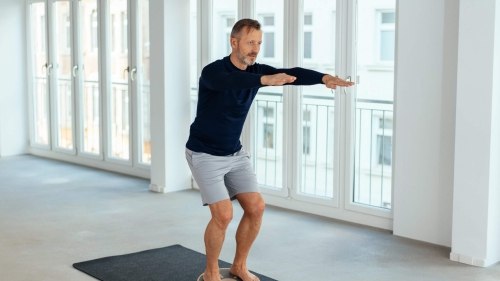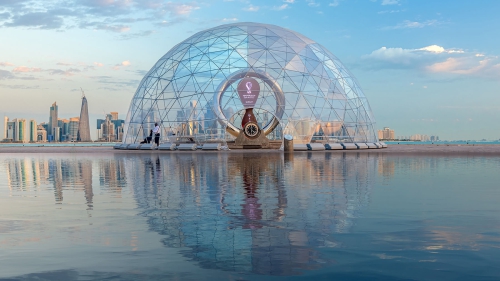Running

In a recent issue of Runner’s World magazine is a story profiling 50 ordinary people who turn their lives around through running. Before becoming runners, they suffered from obesity and numerous other medical, physical, and mental ailments. At some point in their lives, they decided to transform their lives for the better through running. Indeed, running is known to improve your life—physically, emotionally, and mentally. With the proper knowledge, basic attire and tools, anyone can take on this this sport at any stage of life and reap the benefits.
I’ve always known that running is a transformative sport, and I’ve always admired those who could lace up their gym shoes early every morning and run for miles. Those runners look tired and worn out with sweat soaking their clothes, but they were also easily recognizable as highly motivated, healthy, and accomplished individuals. Indeed, many studies have revealed that running stimulates brain activity, increases lean muscle while decreasing fat, and makes a body physically stronger. Stronger bodies give you increased metabolism, better bone density, keep your hormones in balance, allow your muscles to increase their capacity to create energy, and bolster your heart health. At the same time, running is not for the faint of spirit. It takes a strong mindset and commitment to the sport in order to excel and see the best results. But ask any runner, and they will surely tell you that it is worth the effort.
Take Stephanie Hall for example. Stephanie is currently a healthy twenty-four-year-old, but for many years, she suffered from obesity until she decided to make a change. Now, she runs five times a week. Stephanie started her running journey to lose weight, but soon found much more satisfaction than simply shedding pounds. “The feeling after you finish your run is amazing to me,” she says. “The point where you feel like you can’t go any further and you prove your body wrong by pushing through. I always feel so accomplished afterward. I use running as a stress reliever. It is very therapeutic.” Indeed, Stephanie’s positive feeling after a run is known as “runner’s high,” which is a euphoric feeling a person gets after an aerobic workout such as running because the brain releases the “feel good” endorphins into the body.
Over the years, extensive research on running found that it provides numerous benefits to overall health and cognitive function. Carl Cotman from the Institute for Brain Aging and Dementia in the Department of Neurobiology and Behavior at the University of California says, “It is now clear that voluntary exercise can increase levels of brain-derived neurotrophic factor (BDNF) and other growth factors, stimulate neurogenesis, increase resistance to brain insult, and improve learning and mental performance.” Thankfully, these benefits are not limited to non-Muslims.
A healthy lifestyle is a central part of a Muslim’s existence. Prophet Muhammad (Peace Be Upon Him [PBUH]) told his followers that, “The strong believer is better and is more beloved to Allah than the weak believer, although both are good. Strive for that which will benefit you, seek the help of Allah, and do not feel helpless.” –Sunan Ibn Majah, Vol. 1, Book 1, Hadith 79. Although some will argue that the Prophet (PBUH) was referring to strength of faith, many scholars also concur that physical and mental strength are substantially valuable to a Muslim’s life. For those who are blessed with physical health, they must use this blessing to promote goodness in themselves and for the surrounding communities.
Although we cannot always prevent illnesses and ailments, running is an optimal way to achieve overall well-being in less time. According to Trisha McNary, a writer specializing in health and fitness, a person would need to walk about 2.3 to 2.8 miles to burn the same calories as running 2 miles. In comparison with another cardio exercise, biking, she says that, “Biking is low-impact exercise that is easier than running for people with knee problems because body weight is supported. Regardless of weight, in 24 minutes -- the same time it would take to run 2 miles at 5 mph -- you can burn an equal number of calories by biking at a moderate pace of 13 mph. To match the calorie burn of a run at a faster pace of 10 mph, you'd have to cycle for 12 minutes at a pace of 20 miles per hour.” Finally, when compared to swimming—one of the lowest impact forms of cardio—"In 12 minutes—the time it would take to run 2 miles at 5 mph—a 125-pound person will burn about 72 calories swimming moderately and 120 swimming vigorously. A 185-pound person will burn about 106 calories swimming moderately and 178 swimming vigorously.”
Whether you run indoors on a treadmill, or outside in nature, experts agree that having a regular exercise routine is most important. Jason Fitzgerald, a certified running coach, encourages beginners to start easy. He says, “If you've never run before, and don't have much experience recently with other sports that involve running like soccer or basketball, you should start gradually. Your first run should be 1 to 3 miles at most. The goal isn't to "get fit" or run fast, but rather to see how your body responds to running with the smallest risk for running injuries.” With time, he encourages runners to slowly, but gradually increase distance and speed. Keep in mind the popular rule among runners, known as the, “10 Percent Rule.” According to this rule, runners should never increase their distance more than ten percent week over week. This helps stave off injuries while improving performance.
For those runners who choose to run outside, another important factor to take into consideration is the climate. In colder climates, runners will experience a slowing of pace due to reduced muscle contractions, increased carbohydrate use, and difficulty maintaining core temperature mainly in the extremities of hands and feet. In warmer climates, one must be cautious of the increased risks for hyperthermia and dehydration. Heat and humidity may cause a runner to feel fatigue and muscle soreness, therefore it is essential to keep hydrated and listen to your body’s needs. Joanna Zeiger, M.S., Ph.D., a professional triathlete from 1998-2008, seven-time Olympic trials qualifier in three sports, and Master’s runner, has personal experience in running under various climate conditions. Based on her experience, she found that each runner has their own ideal comfort zone when it comes to climate. “The median “perfect” temperature from a large study of marathon runners was 44°F for women and 43°F for men,” she continues, “My marathon PR (personal record) was set on a day that started out just below 40°F and ended up in that sweet spot of 44°, and my half marathon PR was on a day that hovered just around 50°F...My iCOMz [ideal comfort zone] seems to be in the 40-50° range when it comes to optimal race performance, but when it comes to pure weather enjoyment, I would have to say that I like it a little warmer than that.”
For Muslim runners, another important aspect is to abide by Islamic modesty in dress. We must remember that rules of modesty apply to both genders. However, since women are instructed to cover more parts of their bodies, they tend to require a more specialized clothing line that may not be commonly found in local department stores. Nonetheless, in 2018 there is no shortage of availability and variety of Islamic wear for female athletes. Furthermore, there are many Muslimah athletes who not only dress according to Islamic guidelines, but also excel in competitive running. For example, Roqaya Al Gassra from Bahrain made history as the first Muslimah in a hijab to run in the 2004 Olympics. In 2006, she won a gold medal in the 200-meter Asian Games in Doha. After her win she said, “Wearing traditional Muslim dress has encouraged me. It's not an obstacle, it's quite the opposite. I feel very special to be in this situation, and I don't feel any pressure by it."
In addition to abiding by an Islamic dress code, there’s a plethora of gear and tools available to help runners enhance their game. The most important gear to have is a proper pair of running shoes. The ‘running shoes guru,’ which is a team of ten runners who test and analyze running shoes—filter shoes by type: cushioning, lightweight, minimalist, motion control, racing, stability, and trail. Each type of shoe has its own advantages based on running style and physical needs. According to the guru testers, “Cushioned running shoes make up one of the largest segments of the running shoe market. Most cushioned shoes fall somewhere in the middle of the spectrum of available options: more cushioning than minimal models, but without major support or corrective elements. Meant for runners that have little to no pronation [the way your foot rolls inward for impact distribution upon landing], cushioned running shoes provide protection and shock absorption with little to no additional support for strong pronators or issues like exceptionally high or low arches.”
In the end, running is a beneficial sport for the body and mind, but it is important to remember that as with anything else in life, moderation is key. Overtraining can lead to fatigue, crashing, and painful injuries. Trainers caution not to let the excitement of running make you impulsively add more mileage than your body can handle. Remember to take a balanced and steady approach so your body can adapt and gain the most long-term benefit. Also, it is important to keep in mind that running should not infringe on your other obligations such as religious duties or family time. Running can be a family sport where even the youngest member of your family can be strapped in their stroller while the rest of the family jog alongside. Make sure your intentions are pure in that you want to be fit and healthy not only for your own personal benefit, but also so that you can be the best Muslim possible for the community.
Finally, we know from the sunnah of the Prophet Muhammad (PBUH), that he and his companions were physically fit. Naturally, a person who is active and energetic is able to perform more good deeds and help others. Based on the 5 pillars of Islam, 3 require physical activity and strength: daily prayer, fasting in Ramadan, and the hajj to Makkah (and visiting Madina). These are clear signs for us that being healthy is very important. Whether you’re running on a treadmill or on God’s green earth, you will appreciate the benefits with every pace. Adopting a running routine now helps us fulfill a healthy mind, body, and spirit that will carry us throughout our lives. As renowned playwright, George Bernard Shaw, once said, “We don’t stop playing because we grow old; we grow old because we stop playing.” In similar terms, don’t think that as you grow older that you should stop exercising; rather you should keep exercising so that you can continue to feel healthy and live your best life.
About the Author: Asma Jarad is a writer, an editor, and an aspiring long-distance runner chasing after that runner’s high.
Reprinted from the Fall 2018 issue of Halal Consumer© magazine with permission from the Islamic Food and Nutrition Council of America (IFANCA®) and Halal Consumer© magazine.

















